15 Texas Landmarks: Natural, Manmade, and Historic


Texas is huge. In fact, it’s the largest state by area at 695km2 and home to Houston, San Antonio, and Dallas which all make the top 10 most populated cities in the USA. With that in mind, you might be wondering how many landmarks are in Texas?
Well, that amount of space and human presence inevitably comes with a whole host of must-see landmarks, ranging from stunning natural wonders to pivotal historical locations. We’ve put together a list of the 15 most interesting to get your Texas journey started.
1. The Alamo, San Antonio
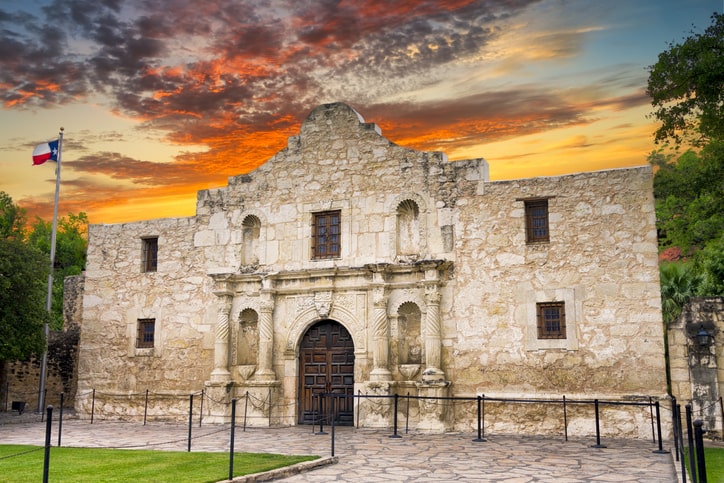
Area: Southern Texas Built: 1718
The Alamo is the common name used to describe a historic mission building established by Spanish Roman Catholics in the 18th Century. Constructed as an outpost in Texas to spread the word of Catholicism, the Alamo Mission was successful in converting thousands of Native American tribes-people over an 80 year period.
However, it is more famous as the site of the Battle of the Alamo during the Texas Revolution against the Mexican Government. After driving Mexican forces from all Texan lands in 1835, the Texan army had to try and defend an inevitable counterattack.
This came in March 1836, when the Alamo was overwhelmed by a superior number of Mexicans, leading to heavy Texan casualties and the wider retreat of the Texan Army. Eventually, the Texas Army would defeat Mexico after using the defeat at the Alamo as motivation for revenge. These events wrote the site into the history books and made the Alamo one of the most famous landmarks in Texas.
2. Big Bend National Park
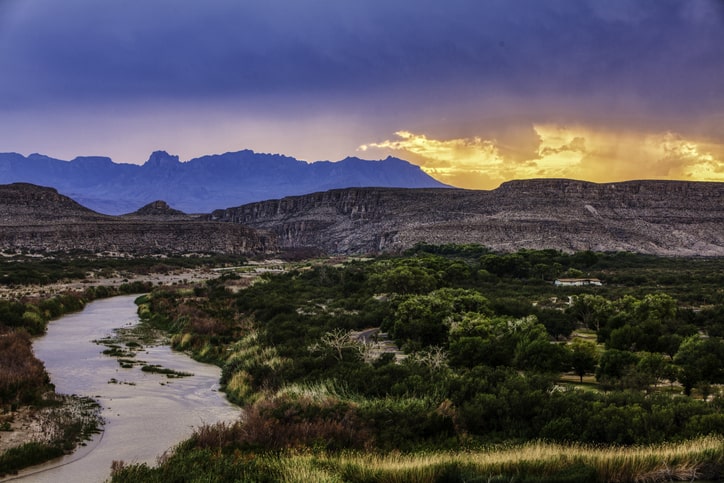
Area: South West Texas Discovered: 1535
Unsurprisingly, Big Bend National Park is named after a large meander or bend in the Rio Grande River that runs through the local area. And if it’s natural beauty you’re after, you’ll be guaranteed to find it here.
Covering 3,242 km2, the park has great ecological and archaeological significance. Evidence of human settlement in the area by Paleo-Indians dates back 10,000 years, and since then it has been occupied by their Native American ancestors.
Big Bend is also the largest reserve of the Chihuahuan Desert in the USA, a protected habitat type that is home to a number of vulnerable species of flora and fauna. If you can bear the heat, Big Bend is renowned for its mountain hikes that lead to stunning panoramic views of the Lone Star State.
3. The Texas State Capitol Building
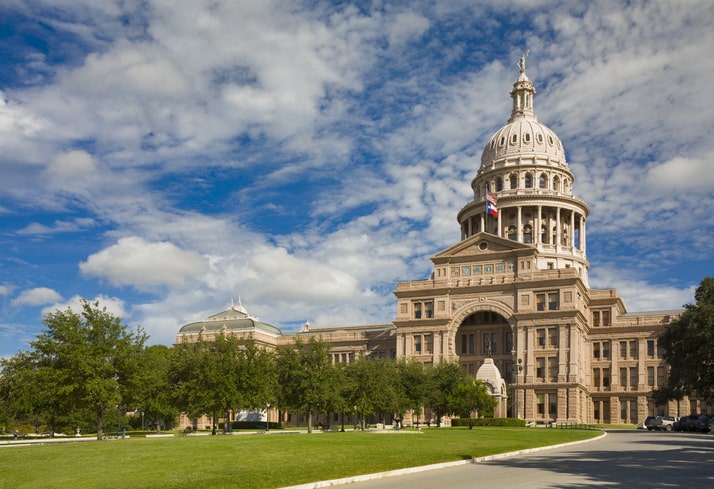
Area: South West Texas Built: 1882
The Texas State Capitol Building is symbolic of Austin’s importance as the seat of governmental power in the state. What you see today is actually the third incarnation of a building that has been central to Texas’ identity since it was an independent republic in the 19th Century. Back then, the Capitol was a small wooden structure used as a meeting place for those involved with running the Republic.
After being annexed by the USA in 1845, the wooden building remained until 1885 when it was rebuilt with local red granite. The cornerstone was laid on Texas’ Independence Day of that year and opened to the public on San Jacinto Day in 1888. Following a fire in 1983, the Capitol underwent major reconstructions and the local government took the chance to extend it with new office wings, grounds, and an underground section.
4. Palo Duro Canyon
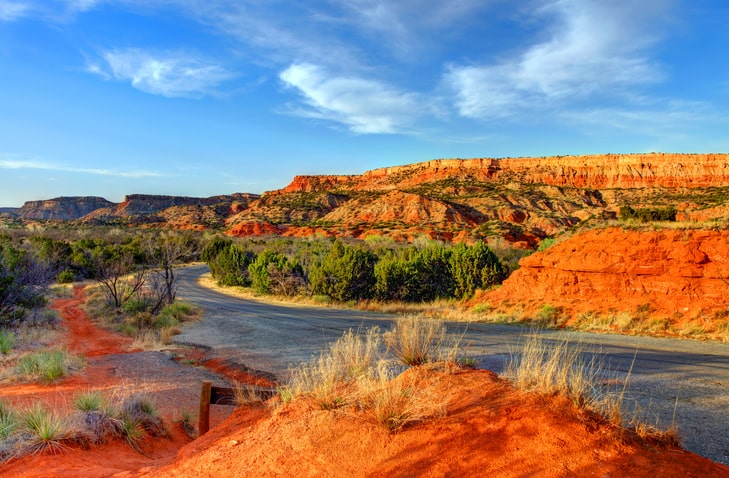
Area: North West Texas Discovered: 1541
Also known as ‘The Grand Canyon of Texas’, the Palo Duro Canyon is 190km long and stretches up to 32km wide in some places. As such, it is the second-largest canyon in the USA. The 820 feet of depth creates stunning steep walls and dramatic plateaus from which you can see the canyon snake its way through the landscape.
The Canyon was formed by water erosion over millennia from the Red River, leaving behind caves and hoodoos. Throughout the National Park area, there is a range of hiking trails and campsites to facilitate long-term stays, but even a short day trip in a car can give you a taste of Palo Duro’s beauty.
5. Enchanted Rock
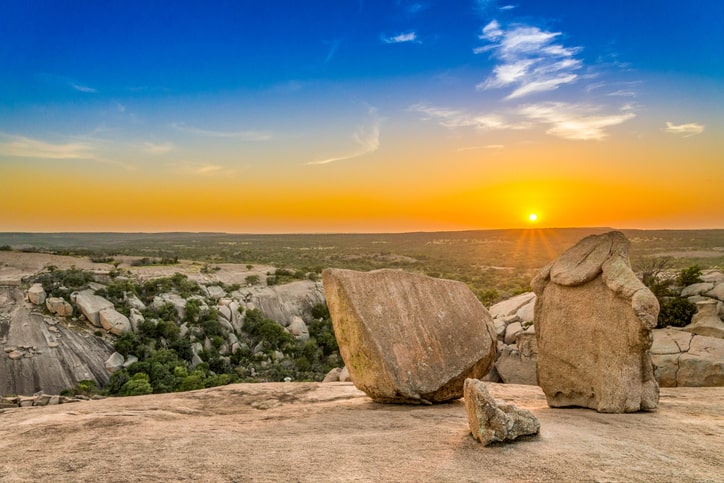
Area: Central Texas Discovered: 1700s
Enchanted Rock is a type of geological formation called a monadnock which just means an isolated mound, hill, or mountain. At 1,825ft high, Enchanted Rock certainly stands out from its surroundings near Fredericksburg.
Aside from its mystical appearance, the rock derives its name from the folklore of local Native American tribes who claim it has spiritual powers. Enchanted Rock was also known by Natives as a place to hide from settlers but now it’s a popular hiking spot with guided tours available.
6. Johnson Space Center
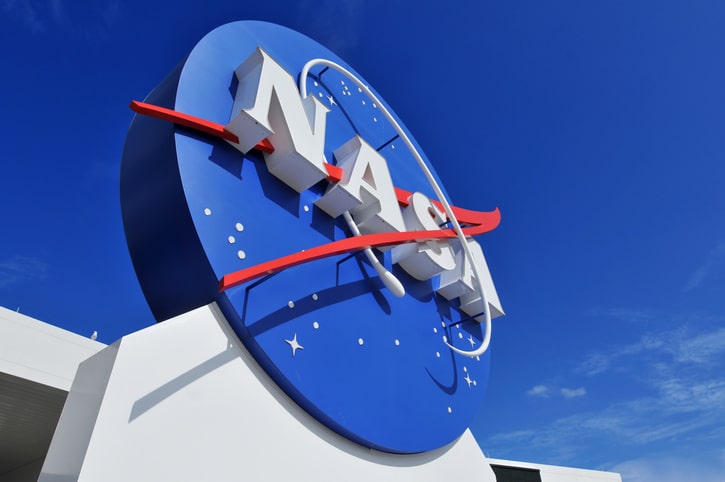
Area: South East Texas Built: 1961
Ever wondered why astronauts might say "Houston, we have a problem"? Well, that’s because NASA’s Mission Control station, the Johnson Space Center, is situated just outside of Houston, Texas. It’s not just the control center at the JSC, astronauts are also trained for spaceflight alongside a wealth of research programs.
As an added attraction, the control station for the famous Apollo missions has been opened to the public, offering an amazing chance to soak up all of its historic moments.
7. Amarillo Cadillac Ranch
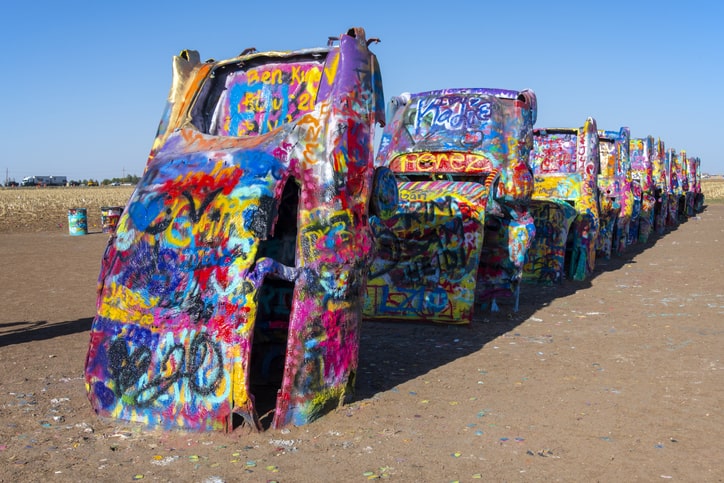
Area: North West Texas Built: 1974
In the middle of a cow pasture field in the Texas Panhandle lies ten Cadillacs, half buried in the ground facing tail up. This is the Cadillac Ranch. An art installation created by the avant-garde art-collective Ant Farm, the Cadillac Ranch is an ode to the changing design of the iconic Cadillac tailfin.
This is certainly a different kind of entry to the list of famous Texas landmarks but it’s certainly an original one. When you’re on a road trip through the southern states, catching a glimpse of the leaning Cadillacs from the I40 lets you know exactly where in the world you are.
8. San Jacinto Battleground Historic Site
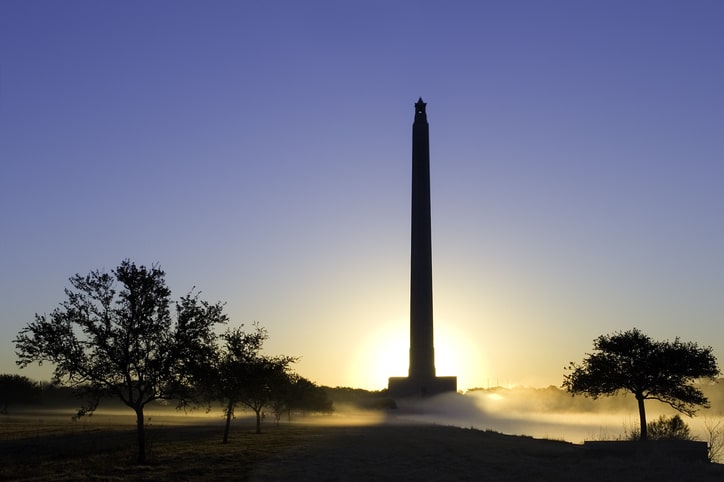
Area: South West Texas Built: 1880s
Covering 1,200 acres, the San Jacinto Battleground is a designated National Historic Landmark and perhaps the most important piece of land associated with Texas history. Texas was once part of Mexico until the Texas Revolution kicked into gear, sparked by American settlers who felt disconnected from the Mexican government and wanted to rule themselves.
They achieved their goal at the Battle of San Jacinto where Texan forces finally defeated Santa Anna, the renowned Mexican general who had maintained the upper hand over the state until 1836. Now visitors can wander the battlefields, reflect at the memorial and even see the USS Texas which is harbored nearby.
9. Fort Worth Stockyards
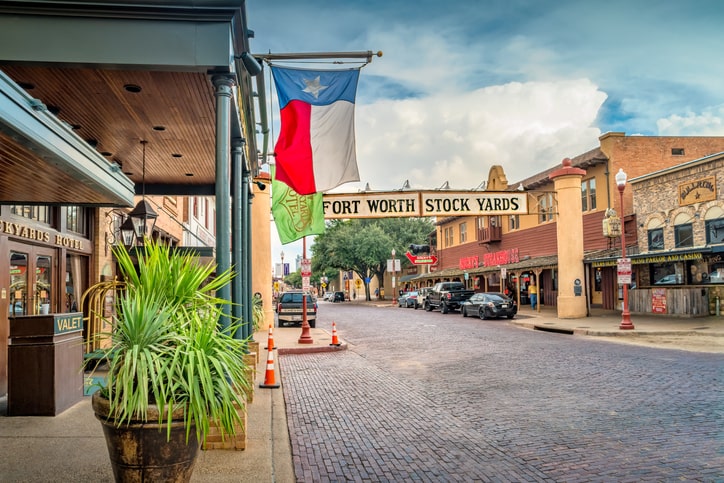
Area: North Texas Built: 1890
Fort Worth boomed when the railways were introduced in 1890. Specializing in the cow and meat trade, the city became known as the central hub for trading livestock in the South, sometimes processing one million cattle per year.
Now it is registered as a historic district where the heritage of the cattle industry has been preserved through new forms of industry. Along the stockyard streets, it is steakhouses galore with a wealth of cattle-themed bars and shops. If you’re lucky, you might even catch the weekly rodeo!
10. Dealey Plaza
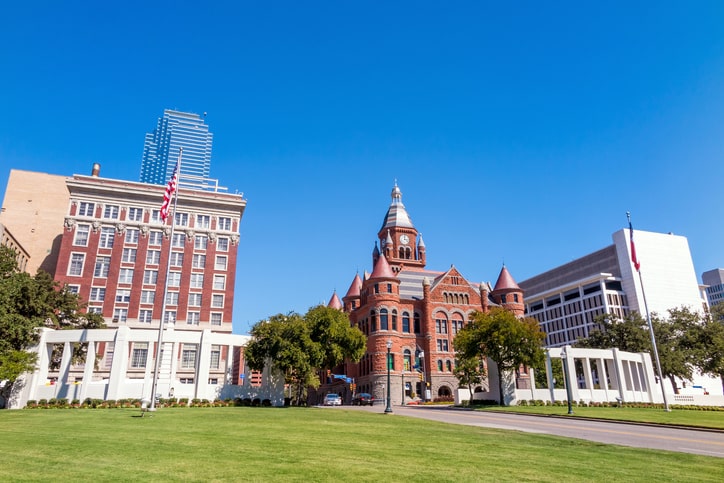
Area: North East Texas Built: 1890
By itself, Dealey Plaza is an unremarkable place. You could walk through it on a normal day and think you were in any town in the USA. However, on 11th November 1963, Dealey Plaza became notorious as the location of John F. Kennedy’s assassination.
In the vicinity of the Plaza are multiple museums housed in buildings involved with the shooting as well as a striking memorial to the former President.
11. Natural Bridge Caverns
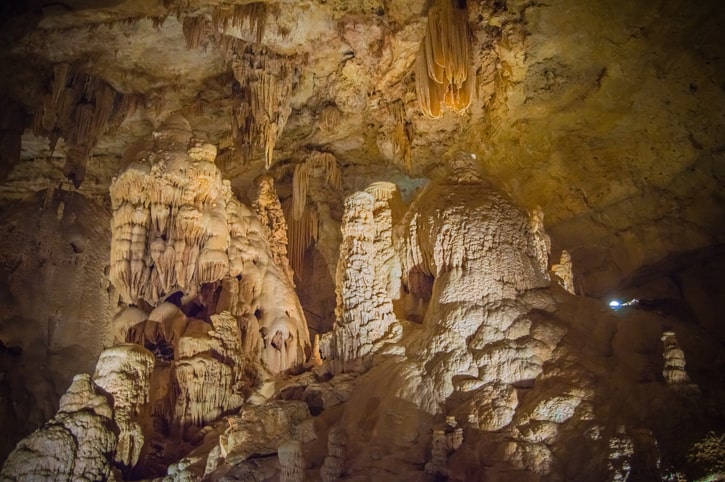
Area: South Texas Discovered: 1960
Beneath the Texas Hill Country, a maze of caverns reach 230ft below the Earth’s surface. Visitors can enter an alien world of stalactites, stalagmites, and waxy limestone rocks that are still developing to this day. Already a well-studied scientific site, the caverns have been explored as recently as 2019 where a further 1,600ft of unseen passages were discovered.
12. Big Tex
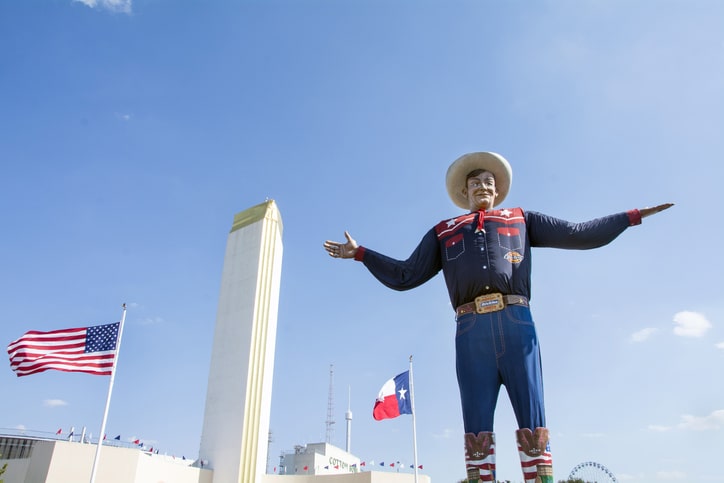
Area: North East Texas Built: 1949
Big Tex is a cultural icon. From El Paso to Houston, every Texan knows the familiar face of Big Tex. Dressed in traditional ranching attire, Tex stands 55ft high and has been through a lot over the years, including a fire that completely destroyed the internal structure.
Originally built in 1949 as a huge Santa Claus statue, Tex was transformed into a cowboy for the 1952 State Fair. Ever since, the friendly giant has stood proudly in Dallas and acted as a point of reference for local residents.
13. Congress Avenue Bridge
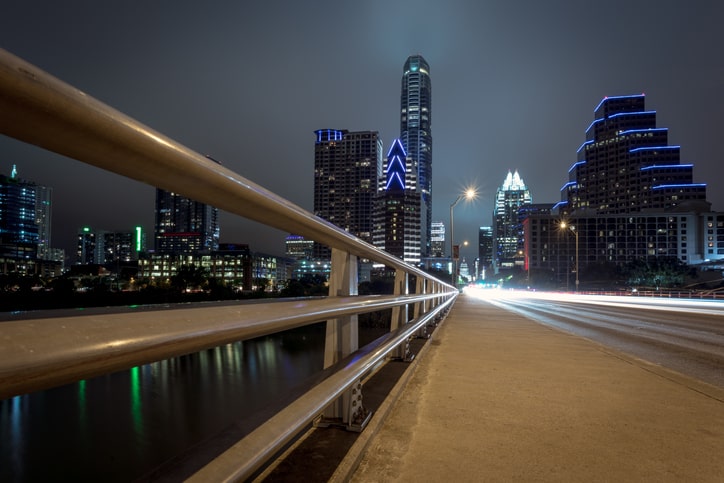
Area: Central Texas Built: 1960
The Congress Avenue Bridge began life as a small wooden pontoon in 1869, ferrying locals across the water in Austin for a small fee. After being reconstructed as an iron bridge later in the century, it was refurbished with concrete in the 1980s.
Although not as famous or visually impressive as others in the USA, the Congress Avenue Bridge is unique in that it is home to the largest population of roosting urban bats in the world. Reason enough to visit on that fact alone!
14. Lady Bird Lake
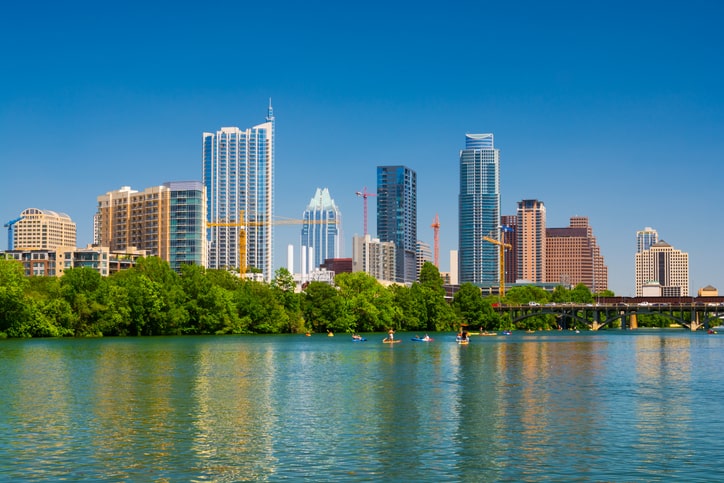
Area: Central Texas Built: 1960
Referred to by locals simply as ‘Town Lake’, the Lady Bird is a manmade reservoir first created as a cooling lake for a newly built power station in the 1960s. Since then, it has provided Austin with a tranquil setting that has developed into a popular recreation site and beauty spot.
Much like the San Antonio Riverwalk, Lady Bird Lake, which is named after former First Lady Claudia Johnson, offers visitors a chance to connect with nature whilst being in the big city.
15. Lyndon B. Johnson National Historical Park
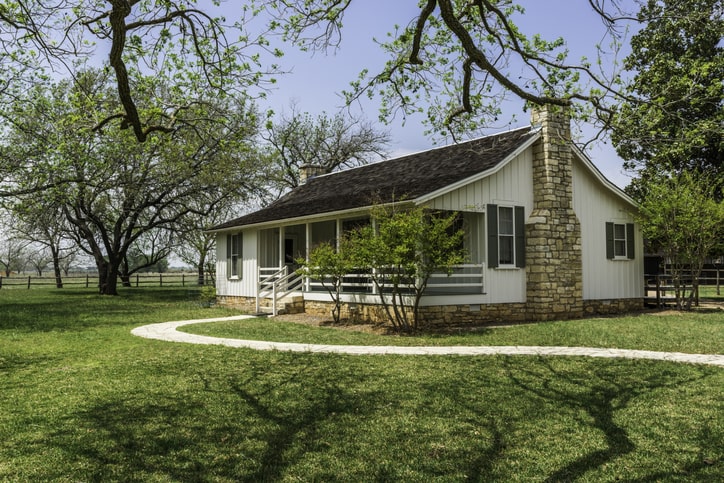
Area: Central Texas Built: 1969
Lyndon Johnson was born and raised in Texas. He became the 36th President of the USA but never lost his affection for his home state. Preserved at a site near Houston is Johnson’s family ranch where he was born, died, and was buried alongside his wife. The area is actually formed from a state park merged with the LBJ Ranch, a designated historic site.
Visitors can take a self-guided, audio driving tour around the estate to get a taste of how the former President liked to live.
So that’s our list of the 15 most famous and interesting landmarks across the largest state in the USA. If reading about some of the historic places in Texas has piqued your interest, then why not check out our article on Texas’ turbulent journey from Mexico to modern-day America.
About the author







